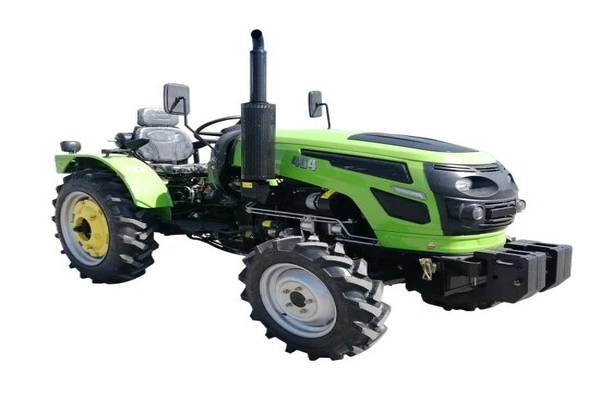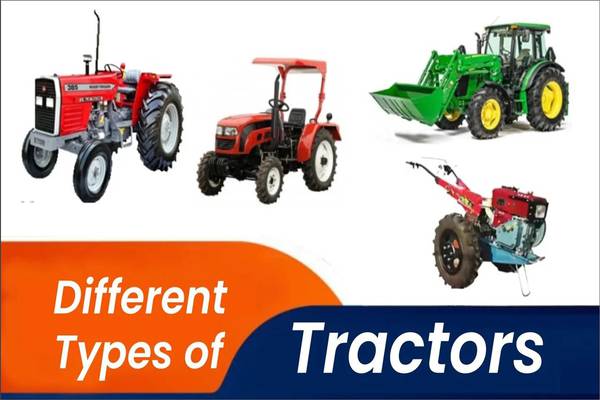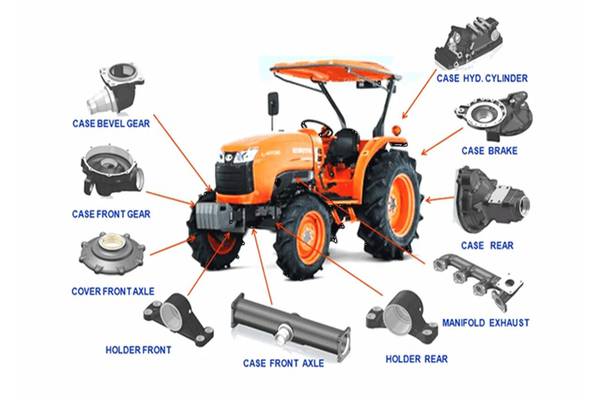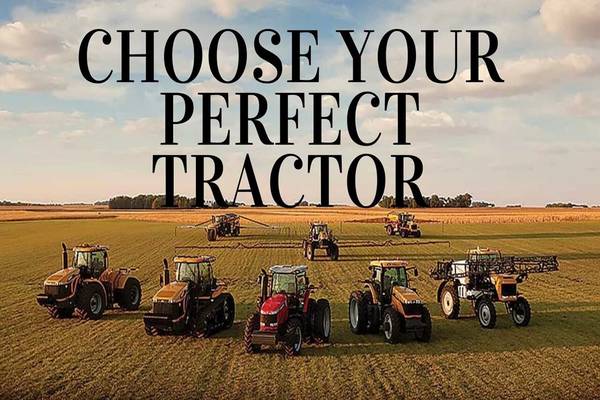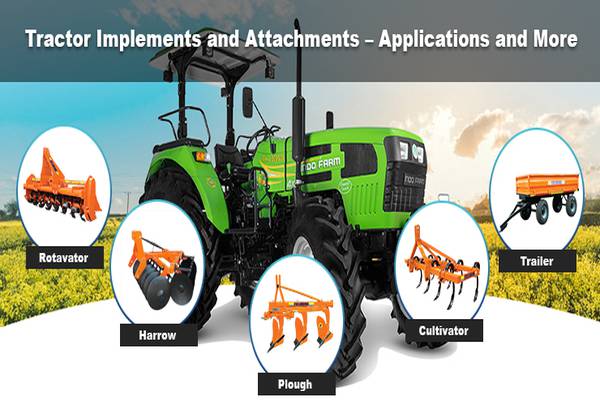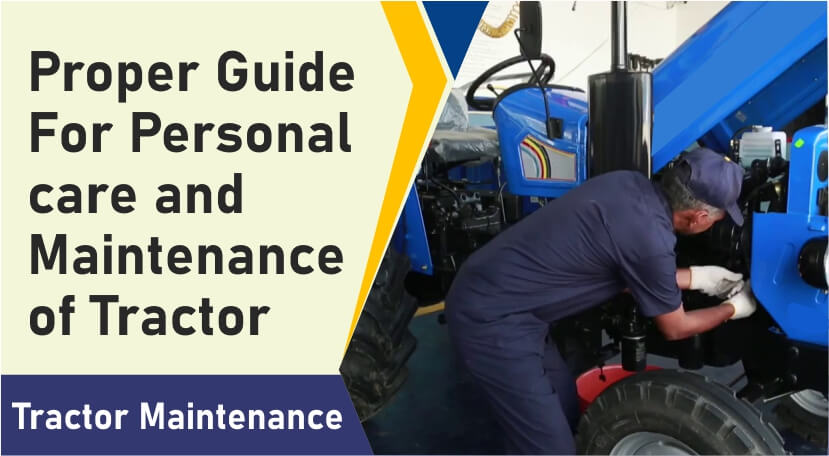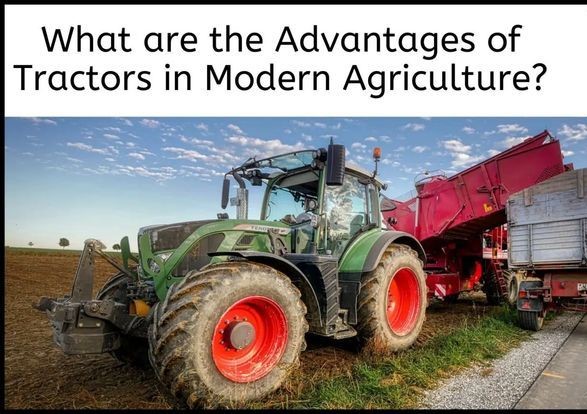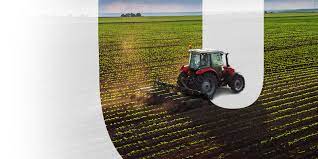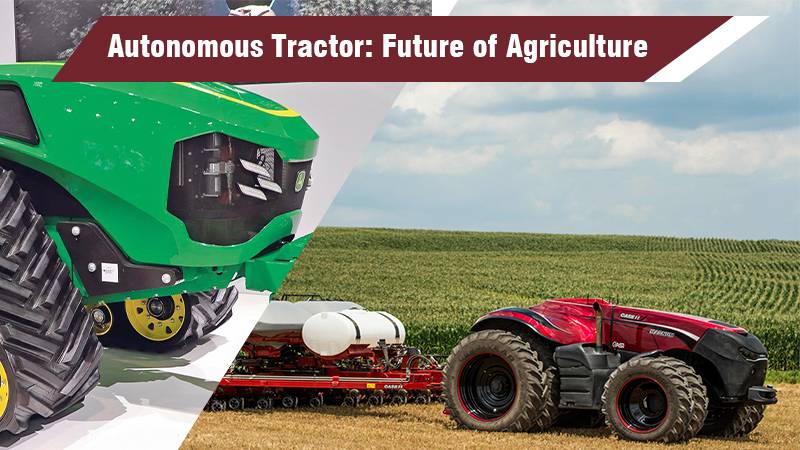Complete Guide For Tractors In Agriculture
Drafted by: vijaychourey26@gmail.com
In the world of modern farming, tractors have become an indispensable tool that revolutionized the way agriculture is practiced. These powerful machines have drastically increased efficiency, productivity, and convenience on the farm. If you're new to the world of tractors or seeking to enhance your knowledge, this complete guide will take you through everything you need to know about tractors for agriculture.
Introduction to Tractors in Agriculture
Tractors have played a pivotal role in transforming agriculture into a high-tech, efficient industry. They have become an essential part of modern farming operations, performing a wide range of tasks that were once labor-intensive and time-consuming.
Types Of Tractors
Subcompact Tractors
Subcompact tractors are small, versatile machines designed for tasks on small plots of land. They are ideal for gardening, landscaping, and light-duty applications.
Compact Tractors
Compact tractors are slightly larger and more powerful, suitable for small to medium-sized farms. They can handle various attachments and are commonly used for mowing, tilling, and hauling.
Utility Tractors
Utility tractors are all-purpose workhorses, known for their durability and power. They are commonly used in larger farms for tasks like plowing, planting, and towing heavy loads.
Row-Crop Tractors
Row-crop tractors are specifically designed for large-scale row-crop farming. They are equipped with adjustable wheel widths to navigate rows of crops without damaging them.
Specialty Tractors
Specialty tractors are designed for specific tasks, such as orchard tractors for fruit farms or vineyard tractors for grape cultivation. They are optimized for working in tight spaces.
Components And Parts Of A Tractor
Engine and Powertrain
The engine provides the necessary power to the tractor. Modern tractors often use diesel engines known for their fuel efficiency and torque.
Transmission and Gearbox
The transmission allows the tractor to shift gears and control speed. Some tractors have manual transmissions, while others use hydrostatic or CVT (continuously variable transmission) systems.
Hydraulic System
The hydraulic system powers attachments and implements, allowing for lifting, lowering, and angling. It's crucial for tasks like operating a front-end loader or a backhoe.
PTO (Power Take-Off)
The PTO transfers power from the engine to operate various implements like mowers, tillers, and balers.
Three-Point Hitch
The three-point hitch is used to attach and control implements like plows, seeders, and cultivators. It provides stability and control over the implement's depth and angle.
Cabin and Controls
Modern tractors often come equipped with comfortable cabins that provide protection from the elements. The controls inside the cabin allow the operator to manage all tractor functions.
Selecting The Right Tractor For Your Needs
Farm Size and Terrain
The size of your farm and the type of terrain it has will influence the size and power of the tractor you need.
Tasks and Applications
Consider the tasks you'll be performing, such as plowing, planting, harvesting, or mowing, and choose a tractor that can handle those tasks effectively.
Horsepower and Efficiency
The tractor's horsepower should align with the tasks you'll be performing. Higher horsepower is necessary for heavy-duty tasks, while lower horsepower is suitable for lighter work.
Budget Considerations
Tractors come in a wide range of prices, so it's essential to establish a budget and find a tractor that offers the best value for your money.
Tractor Attachments And Implements
Plows and Tillers
Plows and tillers are used for breaking up soil and preparing it for planting. They come in different sizes and designs to suit different soil types.
Seeders and Planters
Seeders and planters automate the process of sowing seeds, ensuring even distribution and optimal spacing for healthy plant growth.
Harvesters and Combines
Harvesters and combines are essential for gathering crops efficiently. They can handle tasks like threshing, separating, and collecting grains.
Sprayers and Spreaders
Sprayers and spreaders are used for applying fertilizers, pesticides, and other chemicals to crops. They help maintain healthy plant growth and prevent pests.
Maintenance And Care For Tractors
Regular Inspections and Servicing
Schedule regular inspections and servicing to identify and address any potential issues before they become major problems.
Fluid Checks and Replacements
Check and replace fluids such as engine oil, hydraulic fluid, and coolant to ensure smooth and efficient operation.
Cleaning and Storage
Keep your tractor clean to prevent dirt and debris from damaging its components. Store it in a dry, covered area to protect it from the elements.
Advantages Of Using Tractors In Agriculture
Increased Productivity
Tractors significantly increase productivity by automating labor-intensive tasks, allowing farmers to accomplish more in less time.
Time and Labor Savings
Tasks that once required extensive manual labor can now be completed efficiently with the help of tractors, saving both time and labor costs.
Precision and Accuracy
Tractors enable precise planting, cultivating, and harvesting, resulting in higher yields and better-quality crops.
Versatility in Tasks
With the ability to use various attachments and implements, tractors can perform a wide range of tasks, making them versatile assets on the farm.
Environmental Considerations And Sustainability
Fuel Efficiency and Emissions
Modern tractors are designed for fuel efficiency, reducing emissions and minimizing their carbon footprint.
Alternative Power Sources
Research and development are underway to create tractors powered by alternative sources such as electricity or biofuels.
Future Trends In Tractor Technology
Automation and Robotics
Tractors equipped with advanced automation and robotics will be able to operate autonomously, enhancing efficiency and reducing labor requirements.
GPS and Precision Farming
GPS technology will enable tractors to navigate fields with unprecedented accuracy, leading to optimized planting and harvesting.
Electric and Hybrid Tractors
Electric and hybrid tractors are being developed to provide eco-friendly alternatives with reduced emissions and operating costs.
